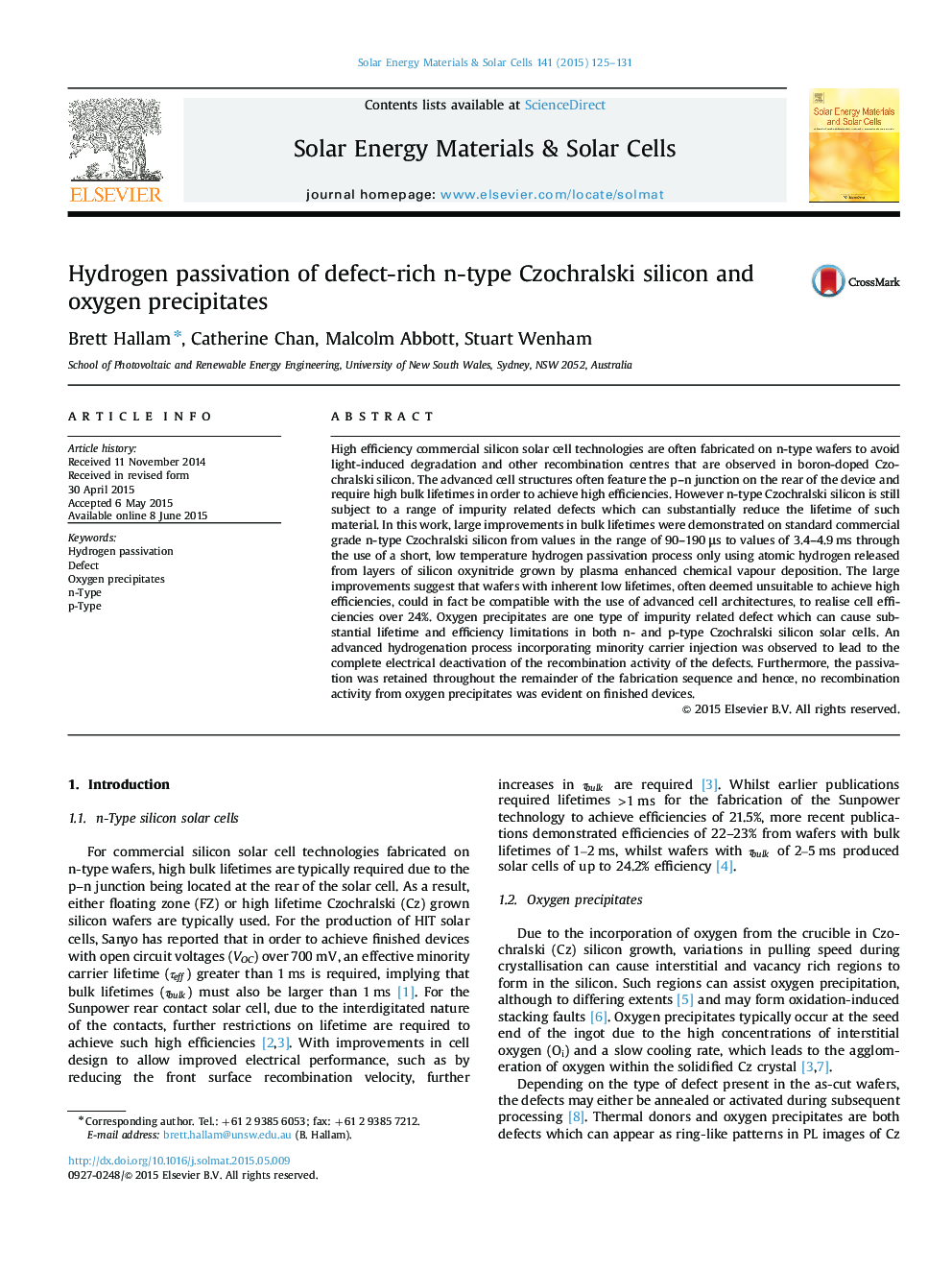| کد مقاله | کد نشریه | سال انتشار | مقاله انگلیسی | نسخه تمام متن |
|---|---|---|---|---|
| 77732 | 49298 | 2015 | 7 صفحه PDF | دانلود رایگان |

• Demonstrated the complete passivation of oxygen precipitates using hydrogen.
• The passivation is stable through the remainder of the fabrication sequence.
• Large increases in bulk lifetime from 0.1 ms to 3.4 ms on n-type Cz wafers.
High efficiency commercial silicon solar cell technologies are often fabricated on n-type wafers to avoid light-induced degradation and other recombination centres that are observed in boron-doped Czochralski silicon. The advanced cell structures often feature the p–n junction on the rear of the device and require high bulk lifetimes in order to achieve high efficiencies. However n-type Czochralski silicon is still subject to a range of impurity related defects which can substantially reduce the lifetime of such material. In this work, large improvements in bulk lifetimes were demonstrated on standard commercial grade n-type Czochralski silicon from values in the range of 90–190 μs to values of 3.4–4.9 ms through the use of a short, low temperature hydrogen passivation process only using atomic hydrogen released from layers of silicon oxynitride grown by plasma enhanced chemical vapour deposition. The large improvements suggest that wafers with inherent low lifetimes, often deemed unsuitable to achieve high efficiencies, could in fact be compatible with the use of advanced cell architectures, to realise cell efficiencies over 24%. Oxygen precipitates are one type of impurity related defect which can cause substantial lifetime and efficiency limitations in both n- and p-type Czochralski silicon solar cells. An advanced hydrogenation process incorporating minority carrier injection was observed to lead to the complete electrical deactivation of the recombination activity of the defects. Furthermore, the passivation was retained throughout the remainder of the fabrication sequence and hence, no recombination activity from oxygen precipitates was evident on finished devices.
Journal: Solar Energy Materials and Solar Cells - Volume 141, October 2015, Pages 125–131